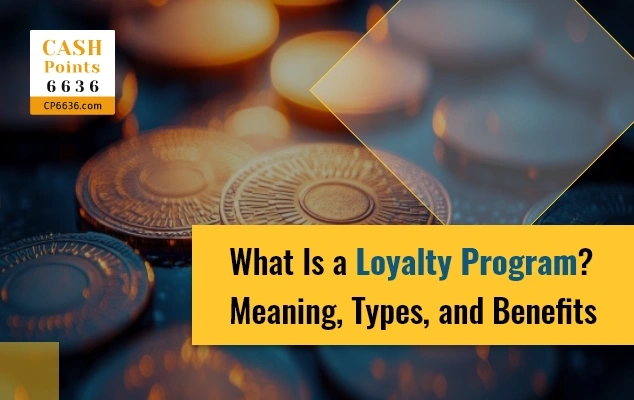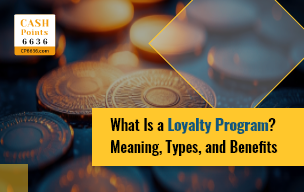What Is a Loyalty Program? Meaning, Types, and Benefits
25 September, 2025
Customers today have endless options. Great products and services are not enough to ensure that they will be back. That is why so many companies rely on loyalty programs. A wise strategy for rewarding customers. With the right program, customers save money and feel appreciated. In return, businesses enjoy repeat sales and stronger connections. This simple give-and-take creates a loyalty bond, which is the foundation of strong brand loyalty. A loyalty program is basically a rewards system. Every time customers shop, subscribe, or engage with a brand, they earn something back, like points, cashback, or perks such as free shipping, birthday discounts, early access to sales, or even exclusive gifts. These rewards encourage them to return instead of going toward competitors. A common example is supermarket points cards. You collect points with every purchase, and later you redeem them for discounts. It’s a clear example of how brand and loyalty work together to benefit both sides and strengthen loyal branding in the customer’s mind. Not all loyalty programs look the same. Businesses design them in different ways depending on what suits their customers best. Here are some of the most popular types: Shoppers earn points with every purchase and later use them for discounts, gifts, or free services. Instead of points, customers get back a percentage of their spending. It might be real cash or store credit. The more customers spend, the higher they climb in the program. Each level comes with better rewards. Customers pay a fee for access to exclusive perks like free delivery or faster service. A group of businesses joins forces to offer shared rewards. Customers can earn and redeem across multiple brands. Instead of focusing on discounts, these programs connect with customers’ values. A share of purchases might go toward charity or sustainability. Loyalty programs bring benefits for both brands and customers. Keep Customers Coming Back: Rewards create a strong loyalty bond. Boost Sales: Loyal customers often spend more. Understand Shoppers Better: Track the habits of the loyalty consumer and personalize offers. Stand Out: Loyalty for brands makes them different from competitors. Save Money: Discounts, cashback, and free products ad up. Enjoy Special Perks: Early access, VIP treatment, or free delivery. Get Personalized Deals: Offers based on their likes and habits. Feel Valued: Recognition builds strong brand loyalty. A loyalty program is more than handing out discounts. It’s about building loyal relationships. Customers enjoy savings, perks, and recognition, while businesses get returning buyers and stronger connections. Whether through points, cashback, or memberships, loyalty for brands helps create loyal branding, strengthen the loyalty bond, and ensure brand and loyalty grow together. This benefits both the loyalty consumer and the business, making loyalty a real driver of growth.What Is a Loyalty Program?
Types of Loyalty Programs

1. Points-Based Loyalty Programs
Example: A coffee shop gives 1 point for every $1 spent. Collect 100 points and your next drink is free.2. Cashback Loyalty Programs
Example: A credit card offering 2% cashback on groceries.3. Tiered Loyalty Programs
Example: Airlines with Silver, Gold, and Platinum membership levels.4. Paid or Subscription Loyalty Programs
Example: Amazon Prime, where members get free shipping plus streaming benefits.5. Coalition Loyalty Programs
Example: A shopping mall card that works in many different stores.6. Value-Based Loyalty Programs
Example: A brand donating part of its members’ spending to plant trees. This creates loyal branding, where customers feel proud to be part of the brand’s mission and remain dedicated loyalty consumer.Benefits of Loyalty Programs
Benefits of Loyalty for Brands
Benefits loyalty program for Customers
Conclusion



